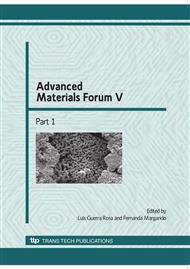p.745
p.753
p.759
p.766
p.772
p.779
p.787
p.793
p.798
Role of Ultraviolet Absorbers (UVA) and Hindered Amine Light Stabilizers (HALS) in ABS Stabilization
Abstract:
The present work evaluates the combination effect of hindered amine light stabilizers (HALS) and ultraviolet absorbers (UVA) on the ultraviolet (UV) stability of acrylonitrile-butadiene-styrene (ABS). Thus, two types of light stabilizers, Tinuvin P and Chimassorb 119 FL, were used to improve the ABS endurance against UV. Stabilized ABS samples were submitted to accelerated weathering in a Xenontest 150 S chamber, according to standard methods, in order to predict copolymer lifetime within a commercially acceptable time period. Infrared spectroscopy with attenuated total reflectance accessory (FTIR-ATR) was used to follow chemical modifications that occur on the material surface as a consequence of degradation process. While non-stabilized ABS samples loose the butadiene component in the first 22 h of exposure, in stabilized samples submitted to same accelerated conditions this component only disappears after 150 h of exposure. Non-stabilized and stabilized ABS samples present a similar yellowing behavior, a gradually increase with exposure time. Nevertheless, as expected, color modifications are less pronounced for stabilized ABS samples. The results obtained suggest that a better performance was achieved for stabilized ABS samples with Tinuvin P and Chimassorb 119 FL, which is very important to extend the copolymer lifetime.
Info:
Periodical:
Pages:
772-778
Citation:
Online since:
January 2010
Authors:
Keywords:
Price:
Сopyright:
© 2010 Trans Tech Publications Ltd. All Rights Reserved
Share:
Citation:


